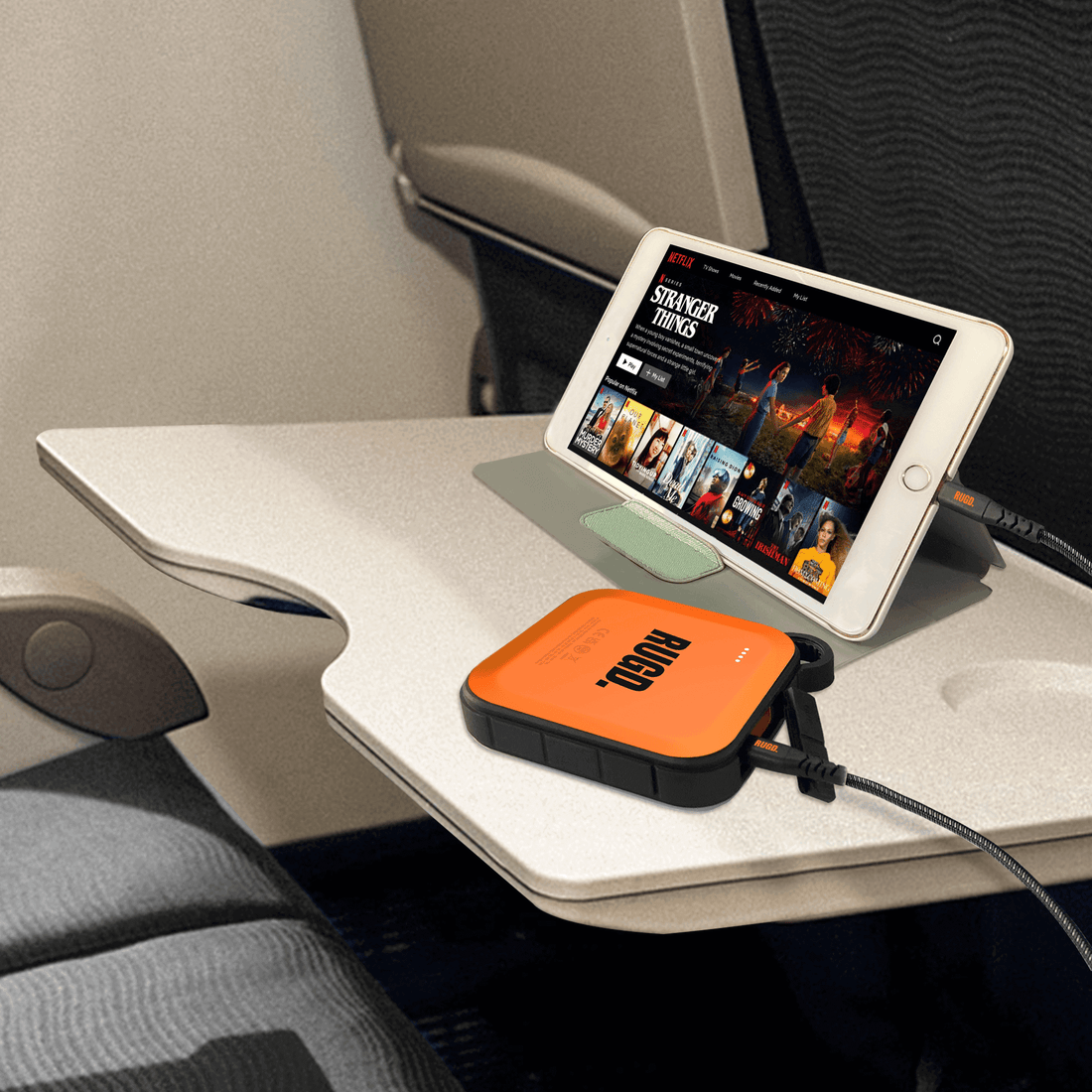
Essential Charging Safety Tips for Your Devices
Share
In today’s world, where we depend on smartphones, tablets, and laptops, charging safely is more important than ever. When we’re rushing through the day, it’s easy to forget about the risks that come with improper charging habits. But here's the truth—charging your devices wrong can cause overheating, shorten battery life, or even lead to a fire. So let’s talk about safe charging tips and how you can charge your devices without worries.
Why Is Safe Charging Important?
You might think plugging in your phone overnight or using a cheap charger isn’t a big deal, but the reality is different. Unsafe charging practices, like using the wrong charger or leaving your phone on charge for too long, can cause overheating or even damage the battery. And don’t even get me started on third-party chargers—they can fry your device in no time.
Here’s what can go wrong with unsafe charging:
- Overheating: Batteries can swell, leak, or in extreme cases, explode.
- Damage to Devices: Using cheap or counterfeit chargers can ruin your battery and damage your device’s internal components.
- Fire Hazard: Faulty chargers or cables can cause short circuits, leading to house fires.
So if you want to avoid these risks, adopting safe charging practices should be a no-brainer. You’re not just protecting your device—you’re protecting yourself and your home.
Choosing the Right Charger
Importance of Using Manufacturer-Approved Chargers
Opting for manufacturer-approved chargers is crucial. These chargers are designed to match your device’s electrical needs and are rigorously tested for safety and compatibility. They ensure optimal performance and minimise the risk of damage to your device. The RUGD Power Brick I is specifically engineered to provide the safest and most efficient charge, no matter the device.
Risks of Using Third-Party Chargers
Third-party chargers can be tempting due to their lower prices, but they often lack essential safety certifications and quality controls. These chargers might overheat, deliver inconsistent power, or damage your device's battery. Investing in a genuine charger like the RUGD Power Brick I from a reputable source is worth it for your device's safety and longevity.
Identifying Genuine Chargers
Spotting genuine chargers can be tricky. Look for the manufacturer’s logo, certification marks, and proper packaging. Genuine chargers are typically sold through authorised retailers. For reliable charging gear, look no further than the RUGD Power Brick I, available directly through trusted sellers and the official RUGD website. It's a safe and secure option for charging all your essential devices.
Safe Charging Practices You Should Follow
Now that you’ve got the right charger, let’s talk about how to charge safely. Here are the golden rules:
Don’t Overcharge Your Devices
Leaving your phone plugged in all night is convenient, but it’s not great for the battery. Modern devices are designed to stop charging once full, but the longer they stay plugged in, the warmer they get. And we know what happens when batteries get too warm.
Quick Tip: Unplug your phone when it hits 100%, or use a smart plug to schedule charging time.
Charge in a Cool, Ventilated Space
Your device’s battery hates heat. So when you charge, make sure the phone or tablet is on a flat, hard surface—not under your pillow or on a soft bed. And keep it out of direct sunlight.
Pro Tip: If your phone gets hot while charging, unplug it and let it cool down before continuing.
Keep an Eye on Your Device While Charging
I know it’s tempting to leave your phone charging overnight, but it’s safer to check on it once in a while. Avoid leaving it on charge for long periods unattended.
Battery Care and Maintenance
Proper Battery Storage
Store batteries in a cool, dry place, away from sunlight and moisture. For long-term storage, keep the battery charged to about 50% to avoid deep discharge or overcharging. Products like the RUGD Power Brick I are perfect for ensuring that your devices get the optimal charge, whether in daily use or stored away.
Avoiding Extreme Temperatures
Extreme temperatures can harm battery performance. Keep devices away from very high or low temperatures. Excessive heat can overheat the battery, while extreme cold can reduce its capacity. Ensure your devices stay within a safe temperature range. The RUGD Power Brick I offers protection from temperature-related issues, safeguarding your device’s battery health.
Regular Battery Inspections
Regularly check your battery for signs of damage such as swelling, leaks, or unusual bulges. If you notice any of these issues, stop using the battery immediately and replace it with a genuine one. Early detection of problems can prevent more serious issues.
Charging While Traveling
Portable Chargers and Power Banks
When charging on the go, opt for high-quality, certified power banks. Ensure the power bank’s output matches your device’s voltage and current needs. Avoid cheap, uncertified models, as they can damage your devices or pose safety risks. The RUGD Power Brick I stands out as an excellent portable power solution, providing safe and consistent charging wherever your adventures take you.
Ensuring Compatibility with Devices
Always check that your portable charger is compatible with your devices by matching voltage and current specifications. Using the wrong charger can lead to slow charging, battery damage, or safety hazards. The RUGD Power Brick I is compatible with a wide range of devices, making it an ideal choice for travelers looking for reliability.
Safety Precautions for Portable Chargers
When using portable chargers, follow these safety precautions:
- Avoid exposing the power bank to extreme temperatures.
- Do not overcharge the power bank or your devices.
- Use the provided cables and adapters to ensure proper charging.
- Store the power bank in a cool, dry place when not in use. The RUGD Power Brick I meets all safety standards, giving you peace of mind wherever you are.
FAQs: Charging Safety Tips for Your Devices
Can I use my power bank in the rain?
With an IP67-rated power bank like the RUGD Portable Power Brick, yes, you can. It’s waterproof and built to withstand harsh outdoor conditions.
What should I do if my device gets too hot while charging?
Unplug it immediately, let it cool down in a ventilated area, and avoid charging in extreme heat or under direct sunlight.
How do I know if my charging cable is safe to use?
Use certified, high-quality cables like the RUGD Rhino Power USB-C. Avoid cheap, generic cables, as they often lack proper insulation and safety features.
Can I leave my phone charging overnight?
While modern devices prevent overcharging, it’s best to unplug once your device reaches full charge to preserve battery health.
What makes a power bank safe to use outdoors?
Look for features like IP67 certification, rugged durability, and built-in safety features like those in RUGD power banks.
Conclusion
Charging safety is key to protecting both your devices and yourself. By using the right chargers, following safe charging practices, and staying alert to potential issues, you can keep your gadgets running smoothly and safely. Products like the RUGD Power Brick I are excellent tools to ensure safe and efficient charging while extending the life of your devices. Prioritising these safety tips will not only enhance your charging habits but also give you peace of mind.
